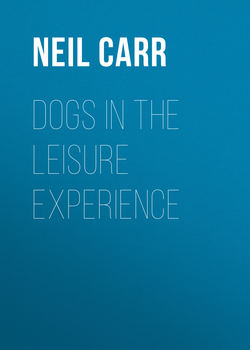Читать книгу Dogs in the Leisure Experience - Neil Carr - Страница 21
На сайте Литреса книга снята с продажи.
Dog Shows
ОглавлениеIf asked to define ‘dog shows’ the first image likely to come into one’s mind is that of Crufts, where purebred dogs are paraded around a judge and the ‘best in show’ is selected. However, dog shows encompass a far wider array of events that all have as their basis a desire to highlight particular characteristics of different breeds of dog, and in doing so encourage the development of these traits to raise the standard of desired behaviour and physique among specific breeds. The first dog show appears to have taken place in 1775 and was focused on presenting the quality of hounds (Wagstaff, 1995). As such, this show was created to highlight the values of a working dog rather than purely as a place for a demonstration of the prowess of dog breeders in a sporting or leisure context. The distinction between working dog shows and dog shows as we know them today as places primarily for the showing of the physical characteristics rather than the abilities of dogs is one that has evolved over time. The initial shows, as with the one noted by Wagstaff were, it seems, mainly focused on the working dog and within this context particularly the sporting dog ( Jackson, 1990), which in the early days of the shows can be more accurately read as hunting dogs. Consequently, there is some disagreement about when the first dog show was held. Indeed, Pearce (1874) and Halsall (1982) suggested that the first dog show did not occur until 1859 and that it took place in Newcastle, UK. Even then we had to wait over 30 years more before the arrival of the iconic dog show, Crufts. It was in 1891 that Charles Cruft held the first Crufts, though it was not until the following year that the first show under Kennel Club rules and regulations was held (Wagstaff, 1995). While the Kennel Club may well be synonymous with Crufts, the organization was actually originally formed in 1873 to regulate the conduct of all dog trials and later shows (Crufts, undated).
The focus of those involved in breeding dogs for dog shows became, relatively quickly, the look of the dog rather than any qualities that it may previously have been bred for. These ‘looks’ are defined by the ‘breed standard’ for the dog, something that is set by a selective group of breeders under the auspices of breed societies; these are largely run by breeders and judges who are or were breeders themselves (Bradshaw, 2011). With the focus of those competing in dog shows being the creation of the perfect-looking dog (Bradshaw, 2011) the other characteristics of these dogs have arguably been ignored or at least forced into a poor second position. Consequently, as Ash (1935)
